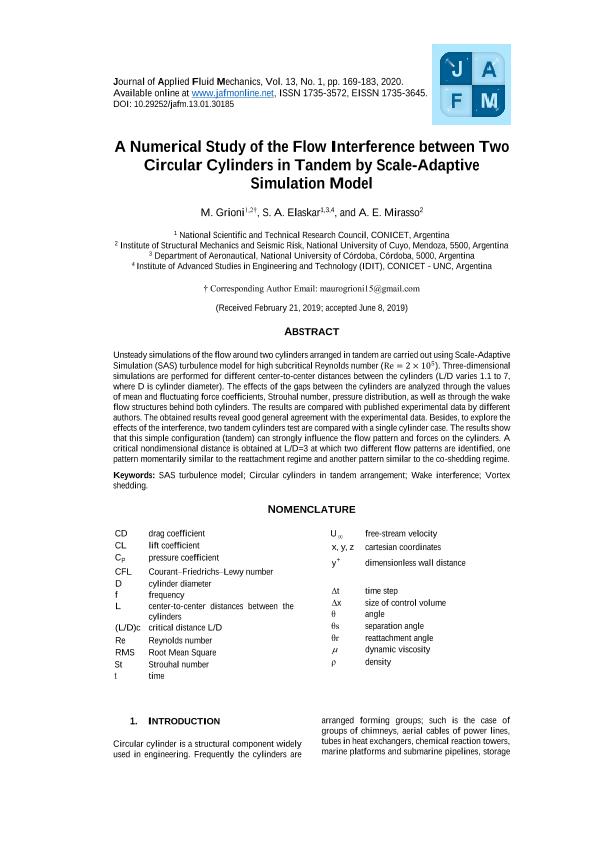Artículo
A numerical study of the flow interference between two circular cylinders in tandem by scale-adaptive simulation model
Fecha de publicación:
12/2020
Editorial:
Isfahan University of Technology
Revista:
Journal of Applied Fluid Mechanics
ISSN:
1735-3572
e-ISSN:
1735-3645
Idioma:
Inglés
Tipo de recurso:
Artículo publicado
Clasificación temática:
Resumen
Unsteady simulations of the flow around two cylinders arranged in tandem are carried out using Scale-Adaptive Simulation (SAS) turbulence model for high subcritical Reynolds number (Re = 2 x 105). Three-dimensional simulations are performed for different center-to-center distances between the cylinders (L/D varies 1.1 to 7, where D is cylinder diameter). The effects of the gaps between the cylinders are analyzed through the values of mean and fluctuating force coefficients, Strouhal number, pressure distribution, as well as through the wake flow structures behind both cylinders. The results are compared with published experimental data by different authors. The obtained results reveal good general agreement with the experimental data. Besides, to explore the effects of the interference, two tandem cylinders test are compared with a single cylinder case. The results show that this simple configuration (tandem) can strongly influence the flow pattern and forces on the cylinders. A critical nondimensional distance is obtained at L/D=3 at which two different flow patterns are identified, one pattern momentarily similar to the reattachment regime and another pattern similar to the co-shedding regime.
Archivos asociados
Licencia
Identificadores
Colecciones
Articulos(IDIT)
Articulos de INSTITUTO DE ESTUDIOS AVANZADOS EN INGENIERIA Y TECNOLOGIA
Articulos de INSTITUTO DE ESTUDIOS AVANZADOS EN INGENIERIA Y TECNOLOGIA
Citación
Grioni, Mauro; Elaskar, Sergio Amado; Mirasso, Anibal Edmundo; A numerical study of the flow interference between two circular cylinders in tandem by scale-adaptive simulation model; Isfahan University of Technology; Journal of Applied Fluid Mechanics; 13; 1; 12-2020; 169-183
Compartir
Altmétricas




